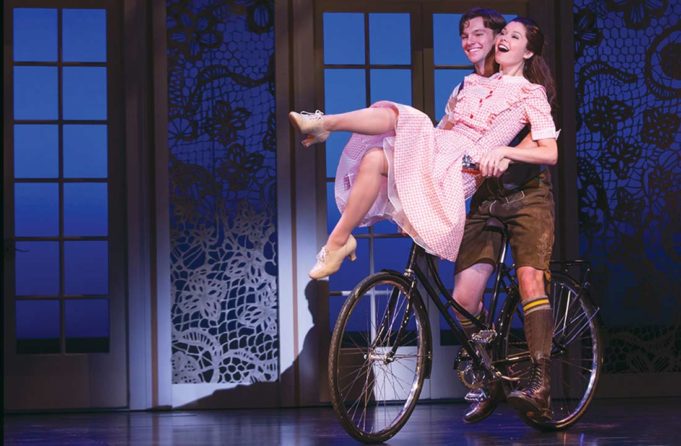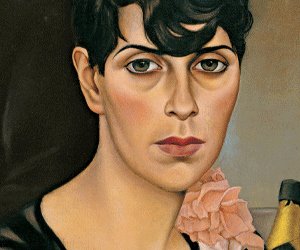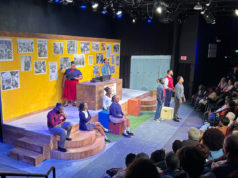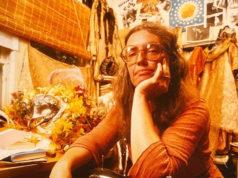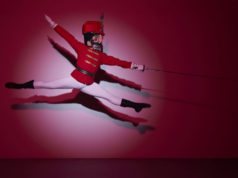The triumph of the human spirit sounds uninspiring after having been sung by the same characters with the same voices for over half a century. To conductor Jay Alger’s credit, The Sound of Music that echoed through Bass Hall last weekend paid no impiety to the musical bars mastered by Rodgers and Hammerstein. With slightly more irreverence for tradition than his predecessors, the show’s creative director, Jack O’Brien, tiptoed into the realm of creative risk with his character development of two leading ladies.
Perched on a bridge in front of a mountainous backdrop, postulant Maria (Kerstin Anderson) made a subdued first impression in her opening number. She trilled her way home to Nonnberg Abbey, where Mother Abbess (Melody Betts) serenaded Maria back out into the world to act as governess for the seven children of widower Captain von Trapp. For every musical gift she can give them, the Captain blows his whistle in harsh retaliation –– until her spritely sincerity can be resisted no more. Maria wins over the entire family, sends the Captain’s fiancée packing, and distracts everyone from the German doomsday to come. After a wedding, a honeymoon, and a talent show, the family of nine hides at night in the abbey garden, where they decide to climb every mountain to flee Nazi persecution.
Since debuting on Broadway in 1959, the musical has won many Tonys for many directors, especially those staying true to the profile of the 1965 film. Few have amplified the effusiveness of the characters. Fewer still have attempted adaptations. Recall the trainwreck that was The Sound of Music Live! Carrie Underwood’s overly theatrical character and costuming distracted audiences from what could have been a smart revitalization of the original masterpiece. That is, the powerful voice of Audra McDonald reinvigorating the role of Mother Abbess.
O’Brien must have been taking notes on this flop. His efforts to revitalize the play are cautious nips and tucks, excepting the almighty vocal range required to play Mother Abbess, which needs neither filter nor nun-like stolidity. This sapiential character often takes a backseat to the more darling Maria, but the impact of each shifts in O’Brien’s production. Maria remains central to the performance, of course, ushering in updates to Julie Andrews’ signature look, topped with a new girlish giggle. At times, the youthful lilt in Anderson’s voice paled next to the profundo pipes of Betts, but the former’s soprano warmed up to a wider vocal range when harmonizing with the latter.
Captain Georg von Trapp (Ben Davis), “Uncle Max” Detweiler (Merwin Foard), and the rest of the cast hit their high notes with easy fluidity, to be expected of a Broadway-level troupe. The ensemble of cooperative children was no less impressive. Every one of the seven siblings seemed really comfortable onstage.
Animated by all the grandeur of Austrian aristocracy, the set design included a spiral staircase and solid wood accents that gave weight to the more formative scenes of character development in Captain von Trapp’s home. Even more animated by 21st-century patterning were the sliding flats forming the abbey and its offices with stained-glass window projections saturating and extending the dimensions of the cloistered space beyond what the eye could see. Most of the time spent on set unfolded in the abbey or the von Trapp home until the end, when the audience was taken inside The Concert Hall at Kaltzberg and into a more interactive experience. The fourth wall fell when Uncle Max uncomfortably assumed a stage smocked from floor-to-ceiling with Nazi flags, and he demanded applause and encore from behind a 1930s carbon microphone. The interaction felt well-timed, waking any passive spectators just before Nazi flashlights barreled across the stage and into the audience.
Pardon the plebeian comparison, but O’Brien’s creative strides are best likened to the conversion of the food pyramid into the food plate: more protein and vegetables, fewer white breads and starches. The new Maria seemed to grow on the audience by intermission and made much-needed space for her fellow soprano, Betts, whose voice had many talking (and left others speechless).
O’Brien’s creative risks couldn’t come without consequences, and we were left wanting more: more challenges to a production that has remained whitewashed for so long.




